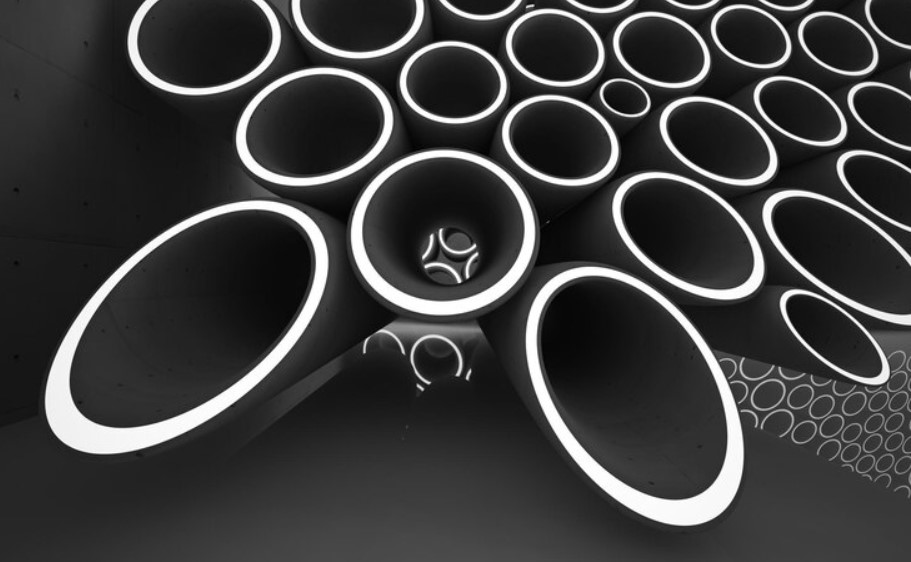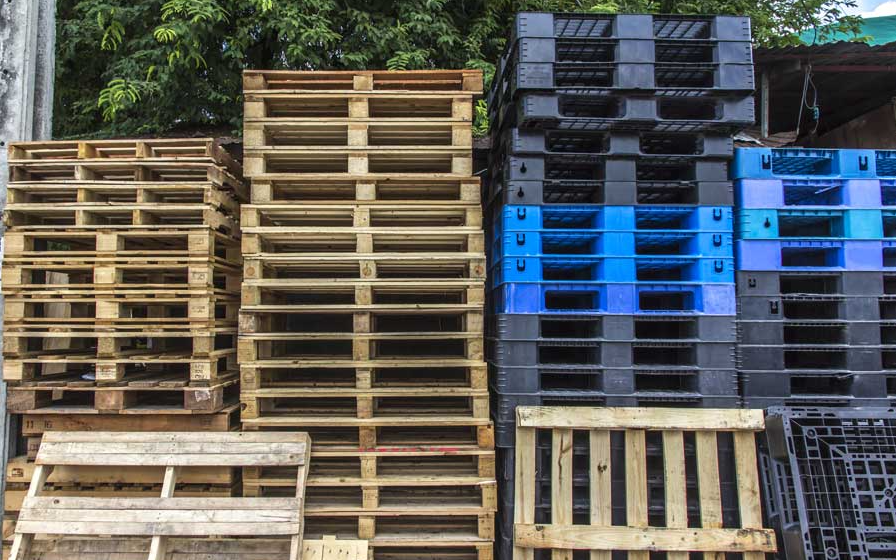Due to the fact that they are inexpensive and fairly easy to install, PVC pipes make up a great deal of plumbing in most homes and businesses. Likewise, everybody is concerned with the safety of water for drinking. These mentioned factors are what make it important to know whether PVC pipe are safe or not.
The blog is simply to provide the truth about PVC pipe & fitting for drinking water. There is a widely concerned group which deals with the safety and health risks considered with running PVC pipes for their supply of water. The blog will, therefore, focus on the details of PVC pipes, its benefits, concerns, safety standards, and alternatives.
What is PVC Pipe?
PVC stands for polyvinyl chloride. This is one of the most popular plastics used in plumbing. The usages of PVC pipes run a wide spectrum, ranging from water supply and drainage systems down to irrigation systems. Basically, they are lightweight, high in durability, and resistance to failure, making them very pocket-friendly—hence their popularity.
These pipes are vastly used in plumbing because of their characteristic to withstand corrosion. PVC never rusts or corrodes, unlike other metal pipes. Thus, it becomes a preferred choice of many homemakers and builders.
- PVC stands for polyvinyl chloride
- Commonly used in plumbing for water supply, drainage, and irrigation
- Popular due to lightweight, durability, and cost-effectiveness
Benefits of Using PVC Pipes & Fitting
Durability
PVC pipes are known for their durability. They can last for many years without needing replacement. This makes them a long-term solution for plumbing needs. Additionally, their resistance to corrosion means they do not degrade over time.
- Long-lasting and resistant to corrosion
- Provides a long-term solution for plumbing needs
Cost-Effective
One of the main reasons people choose PVC trunking pipes is their cost-effectiveness. They are cheaper than many other materials used for plumbing. This makes them an affordable option for both small and large projects. Moreover, their lightweight nature reduces transportation costs.
- Affordable compared to other materials
- Lightweight, reducing transportation costs
Easy Installation
PVC pipes are easy to install. They are lightweight and can be cut and joined with simple tools. This makes the installation process quicker and easier. Consequently, labor costs are lower, making the overall project more cost-effective.
- Lightweight and easy to handle
- Quick and easy installation process reduces labor costs
Concerns About PVC Pipes for Drinking Water
Chemical Leaching
One major concern with PVC pipes is chemical leaching. Over time, chemicals from the PVC can leach into the water. These chemicals include vinyl chloride and other additives used in the manufacturing process. Chemical leaching can affect water quality and pose health risks.
- Potential chemical leaching from PVC
- Includes chemicals like vinyl chloride and additives
- Affects water quality and poses health risks
Health Risks
The chemicals that leach from PVC pipes can pose various health risks. Studies have shown that exposure to these chemicals can lead to health issues. These may include liver damage, reproductive problems, and increased cancer risk. Ensuring safe drinking water is essential, so these health risks are a significant concern.
- Exposure to leached chemicals can cause health issues
- Potential problems include liver damage, reproductive issues, and cancer risk
- Ensuring safe drinking water is essential
Environmental Impact
PVC production and disposal have significant environmental impacts. Manufacturing PVC involves toxic chemicals that can harm the environment. Additionally, PVC is not biodegradable. This means that PVC waste can persist in the environment for many years, contributing to pollution.
- PVC production involves toxic chemicals
- PVC is not biodegradable
- Contributes to long-term environmental pollution
Safety Standards and Regulations
Safety standards and regulations ensure the use of safe PVC pipes for drinking water. Various regulatory bodies set standards for the use of PVC pipes in plumbing systems. These standards aim to limit the levels of harmful chemicals and ensure the pipes are safe for transporting drinking water.
In the United States, the Environmental Protection Agency (EPA) and the National Sanitation Foundation (NSF) are key organizations that regulate PVC pipes. The EPA sets limits on the levels of vinyl chloride and other chemicals in drinking water. Meanwhile, the NSF certified plumbing products, including PVC pipes, to ensure they meet safety standards.
- EPA sets limits on harmful chemicals in drinking water
- NSF certified plumbing products, including PVC pipes
Moreover, the American Society for Testing and Materials (ASTM) sets standards for the physical properties of PVC pipes. These standards ensure that the pipes are durable and reliable for long-term use. Similarly, the American Water Works Association (AWWA) provides guidelines for the use of PVC pipes in water systems.
- ASTM sets standards for physical properties of PVC pipes
- AWWA provides guidelines for use in water systems
Comparing PVC pipes to other materials can help determine their safety. For instance, copper and stainless steel pipes are also popular choices as a perfect replacement of PVC trunking. These materials have their own safety standards and regulations. Understanding these standards can help you make an informed decision about which material to use for your plumbing needs.
- Compare safety standards of PVC & fitting with other materials like copper and stainless steel
Overall, understanding the safety standards and regulations governing PVC pipes is crucial. These standards ensure that PVC pipes are safe for transporting drinking water. Therefore, choosing certified PVC pipes can help ensure the safety and quality of your water supply.
Alternatives to PVC Pipes
While considering the consideration of safety suitability of PVC pipes for drinking water, looking into alternatives comes to mind. There are many types of materials that can be used for plumbing purposes. All of these have pros and cons. Understanding these options will help you make a well-rounded decision on the best material to use in your needs for plumbing.
Copper Pipes
One could think of copper pipes as a viable alternative to PVC pipes. They have also been in the plumbing domain for decades. Prominent reasons that place copper pipes at the top of the list include the strength factor and durability. These pipes do not rust, and therefore they may serve their owner for long. Moreover, copper does not leach harmful chemicals into the water, thus ensuring safe drinking water.
However, copper pipes can be kind of expensive compared to PVC pipes. They require professional installation that may add a little to their cost. Despite this fact, copper pipes remain a more trustworthy and secure medium for drinking water.
- Durable and resistant to corrosion
- Does not leach harmful chemicals
- More expensive and requires professional installation
PEX Pipes
Another substitute for PVC is cross-linked polyethylene pipes, commonly known as PEX. Compared to rigid PVC pipes, this is relatively flexible and pretty easy to install. They are resistant to scale and chlorine and thus appropriate for the supply lines of water without corroding or pinholing like some pipes do after service over the years.
One of the big concerns associated with PEX pipes is their leaching potential. Most of the pipes have lately received certification for safe drinking water applications. Look for certifications before deciding on any PEX pipes for plumbing needs.
- Flexible and easy to install
- Resistant to scale and chlorine
- Potential to leach chemicals; check for certifications
Read also – Common Myths About Physiotherapy and Lower Back Pain Busted!
Stainless Steel Pipes
Stainless steel pipes offer a quality alternative to PVC piping. They are long-lasting and have high resistance to corrosion; therefore, offering a long-life baktı duration. Stainless steel does not leach chemicals into the water like some other pipes do; thus, it is safe for drinking water. Besides, these pipes can bear high pressure and temperatures for various uses.
The major drawback for stainless steel pipes would be their higher cost. They are more expensive than both PVC and copper pipes. Installation can also become more difficult and may require special tools and expertise. Notwithstanding, stainless steel pipes do offer a safe and reliable solution for drinking water.
- Durable and corrosion-resistant
- Does not leach chemicals
- Expensive and requires specialized installation
Conclusion
In other words, the use of safe PVC pipes for drinking water is a crucial decision. Though PVC pipes offer a lot in the name of durability and cost effectiveness, with easier installation, the chemical leaching and health risks cannot be completely ruled out. Other alternatives to this are the copper pipes, the PEX pipes, and the stainless steel pipes. Each has its pros and cons. Classy and safe but expensive—this defines copper pipes. Flexible, and affordable, but possibly leaching chemicals, PEX pipes shall be. Very durable and safe but highly expensive with difficult installation, thus, are the stainless steel pipes.









